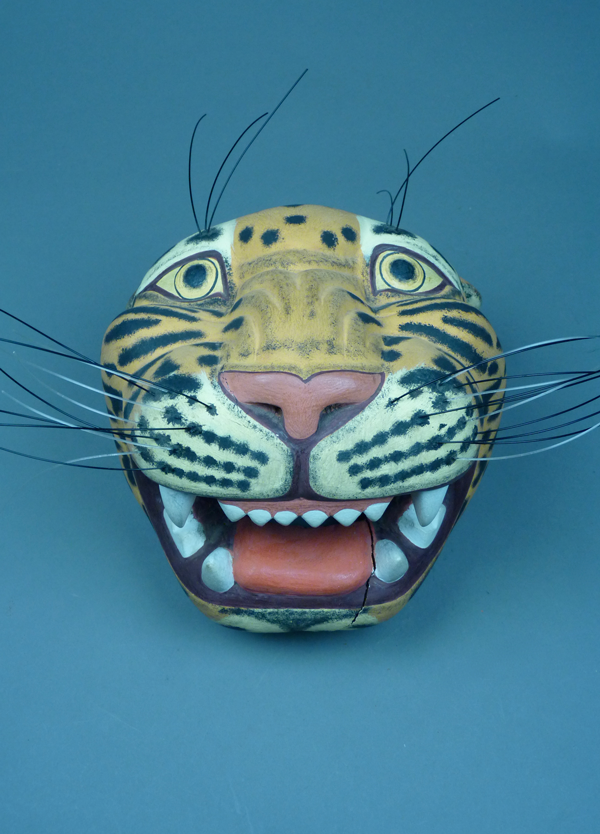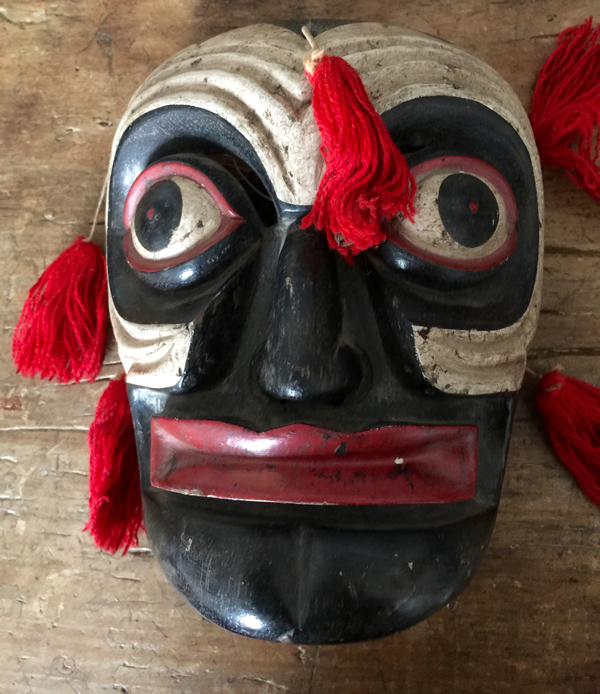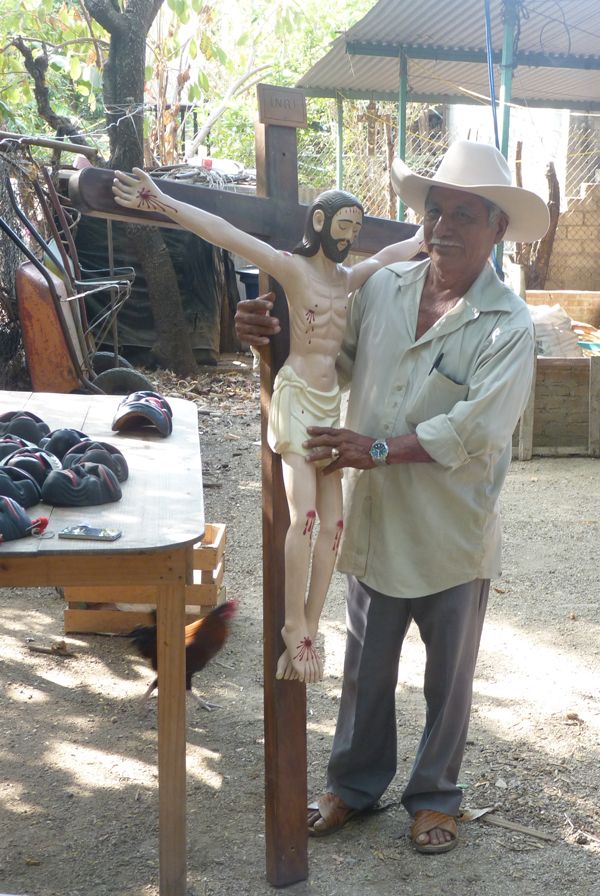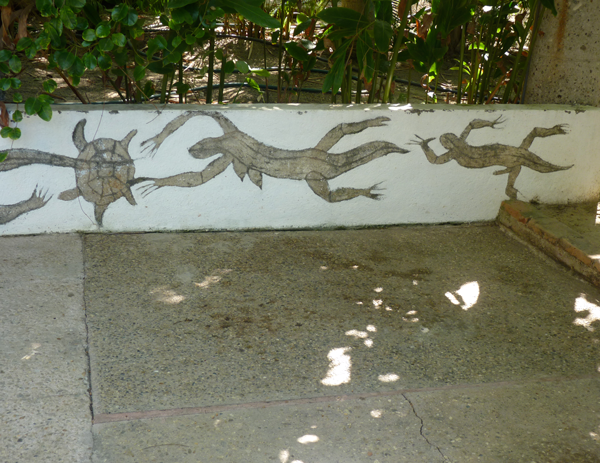The Parachicos dance is most famously performed in the town of Chiapa de Corzo in the Mexican state of Chiapas. It is said to honor three Catholic saints—Saint Anthony, Our Lord of Esquipulas, and Saint Sabastian. The costumed dancers wear wooden masks with bearded Caucasian faces, they carry handmade tin maracas that are painted silver, and on their heads are headdresses made of woven ixtle (or istle), a fiber obtained from the agave or yucca plant. These headdresses are decorated with colored ribbons.
Here is a mid-20th century Parachicos mask with its ixtle headdress.
A continuous band of carved hair, which represents the sideburns and beard, provides a stylized design that frames the face of a Parachicos mask. Unlike those that follow, this one has relief carved eyes, rather than inlaid ones made of glass. Like the later masks, this one does have applied eyebrows, but just on the right eye.






